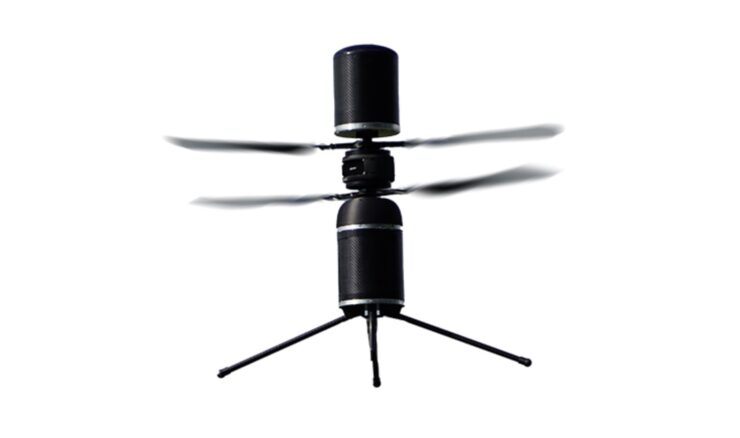
© Ascent Aerosystems NX30
The most common drone design is the quadcopter, such as the variety of drones made by DJI. These drones have four rotors that extend from the drone’s main body. They can range in size from micro drones that fit in the palm of a child’s hand to large, heavy-duty drones used in the agricultural industry. The next most common style is the fixed-wing drone, which resembles a typical airplane. Some examples of fixed-wing drones include the large military-grade Predator and Reaper drones or smaller models like the eBeeX by SenseFly.
A company based out of Wilmington, MA, is hoping to change the norms of what people expect from drones with a wholly unique design. Their design looks nothing like a typical drone, but rather something inspired by the whirly helicopter seeds that drop and spin from trees every spring. In the early 2000s, after earning his BA from Purdue University and his MBA from Yale, Peter Fuchs felt an urge to combine his interests in engineering with his passion for aviation. He was already a licensed pilot, and with the growth of the drone industry, Peter recognized a new entrepreneurial opportunity.
In 2014, he met brothers Jon and Nate Meringer, Syracuse University graduates with backgrounds in engineering and aerospace. At the time, Jon and Nate were working in Arizona on a concept to implement coaxial contra-rotating technology for drones, an idea that aligned perfectly with Peter’s vision. Peter, Jon, and Nate founded Ascent AeroSystems and began designing a drone unlike anything available on the market. In 2015, they launched a Kickstarter campaign that raised $400,000, enough to deliver prototypes and eventually move the company to Massachusetts, where they became leaders in unmanned coaxial propulsion technology.
So, what exactly is coaxial contra-rotating technology? In principle, it is quite simple. It involves building a system where gears rotate two propellers in opposite directions along the same axis. This system is highly energy-efficient and helps maintain stability in aircraft. While it sounds simple, engineering a coaxial propulsion system correctly is complex, and these systems tend to be very noisy, which limits commercial applications. For the most part, coaxial propulsion is used on large manned aircraft like helicopters. However, the team at Ascent AeroSystems was able to successfully scale down the technology to work for drones without the excessive noise typically associated with traditional coaxial propulsion systems.
Currently, Ascent AeroSystems offers three drone models that look nothing like the standard quadcopter or fixed-wing drone. These are the Spirit, NX30, and Helius. As Ascent AeroSystems states, their fleet of drones features “a cylindrical shape, centrally mounted counter-rotating blades, and the ability to carry payloads on both the top and bottom of the aircraft. Ascent’s coaxial propulsion UAVs enable entirely new operating concepts not possible with traditional, comparably sized systems.”
Beyond their unique shape and propulsion system, these drones were built with rugged durability in mind. The cylindrical shape and coaxial system make the drones usable in any terrain and even in adverse weather conditions. The drones can maintain stability in high winds and are fully functional in the rain and snow. They are also lightweight and compact, making them highly portable—a key benefit for military operations. The drones are fully manufactured in the United States, including all of their parts. All of these factors combined led the Department of Defense to add Ascent AeroSystems to the Blue UAS list, which fast-tracks the ability of any federal agency to purchase approved drone technologies.
One of the requirements for remaining on the Blue UAS list is the ability to keep up with production demands. To address this issue, Ascent AeroSystems contacted the renowned manned aircraft manufacturer Robinson Helicopter Company. With a proven track record of producing Federal Aviation Administration (FAA)-certified aircraft at mass scale, Ascent AeroSystems felt confident that a merger would provide them with the infrastructure needed to meet production demands. In 2024, Robinson Helicopter Company formally purchased Ascent AeroSystems as an independent subsidiary.
As Ascent AeroSystems continues to innovate in the drone industry, their unique approach to coaxial propulsion and rugged design is pushing the boundaries of what’s possible in unmanned aerial technology. With a focus on efficiency, durability, and versatility, these drones are not only changing the way we think about aerial vehicles but also paving the way for new applications across industries.
|